Sashiko — An Appreciation
I have been fascinated by the beautiful art-form of Sashiko for more than two decades, conducting workshops and featuring its embroidery patterns in a wide variety of my projects, from quilts to noren panels to tote bags.
Sadly it’s all too easy in the West to be unaware of the rich heritage behind the various cultures we enjoy and love, and sashiko is no exception. So I would like to offer a bit of insight into the history of this wonderful craft and the meaning behind some of its designs and motifs.
Origins of Sashiko Stitching
Sashiko is a Japanese folk-art that had its origins in Edo period Japan, and has evolved over centuries from a frugal necessity into the decorative art so cherished today.
The word Sashiko (刺し子) literally means ’little stabs’, a reference to the simple running stitch employed in repeating or interlocking patterns. Sashiko grew out of a simple, rough-hewn rural culture of farmers and fishing communities.
Put simply, the beauty of the craft we enjoy today can be traced back to the thriftiness of 17th century Japanese peasant women.
It started with thrift
These people simply couldn’t afford to throw away a single scrap of fabric, and so recycled their fabric to reinforce old garments and bedding (a practice known as Boro).
These enterprising women found that using sashiko stitching for this purpose to be most effective. Layers of fabric—cotton in warmer regions and hemp fabric where it was too cold to grow cotton—held together with sashiko stitching provided much better protection from the elements and lasted longer.
They also found that using white thread created an attractive contrast against indigo fabric (the most affordable fabric at the time), and a creative and individual flair to their handmade garments started to appear.
Evolution of Sashiko Patterns and Motifs
In so doing, these women were able to develop motifs and patterned symbols that contributed to narratives about their lives, their past, their families, and their local cultures. Every crafter had her own way of working and varied the style to suit herself and her needs.
Some motifs had talismanic significance, their shape and position meant to protect the wearer in specific ways.
The very fact that sashiko stitching was a peasant craft requiring expediency to get its meaning across ensured an elegant simplicity to the designs.
(A distinctive element in all sashiko patterns is the use of blank or ‘negative’ space as an integral part of the overall pattern.)
Many of the popular traditional sashiko patterns are actually simplified representations of things found in nature, such as plants, birds, animals, or natural phenomena such as clouds or rising steam.
Here are just four of the most enduring traditional sashiko patterns.
Nowaki Grasses Pattern
In this context, Nowaki refers to “windblown grasses”. This beautifully evocative sashiko pattern likely developed from coastal fishing communities. It quite emotively depicts the shape of dune grasses in a strong sea breeze, and represents both resilience, and the fortified strength of one’s roots.
Asanoha (Hemp Leaf) Pattern
The motif of the hemp or flax leaf (asa – hemp; no – of; ha – leaf) is often used in Buddhist scrollwork to represent radiating light, or the inner light of the soul. It was a tradition for Japanese newborns to be clothed in swaddling fabric featuring the Asanoha design, as a blessing so the child may grow strong and healthy.
This is one of the most well-known and popular traditional sashiko patterns used today.
Seigaiha Pattern
The Blue Sea Waves pattern dates back as early as the 6th century Japan. In the context of sashiko embroidery it was used as a talisman, representing “waves” of good luck.
Shippo-Tsunagi (Seven Treasures) Pattern
The Seven Treasures Sashiko pattern has a a rich and multi-faceted history. Its geometric design combines four ellipses in a circle, in such a way that the lines inside make more circles. The word Shippo is a reference to precious stones in Buddhism, and is partly a reference to the ‘shiny’ appearance of the circles’ interiors. You will often see this pattern combined with flowers in sashiko embroidery.
Because of the geometric flow effect of the intersecting circles, this pattern more than anything was used to symbolise endless peace and happiness, as well as a talisman for ‘infinite fertility and family prosperity’.
Other Popular Embroidery Patterns
The number of sashiko embroidery patterns to have evolved over the centuries is quite extensive, not to mention the numerous variations on traditional designs which have developed. The following list is by no means complete, but is intended to give you a feel for the history and possibilities.
- Linked Ten Crosses Pattern
- Yabane (Arrow Feather) Pattern
- Fundo Pattern
- Hana-zashi Pattern
- Hoshi-ami (Fish Nets) Pattern
- Hishi-sayagata Pattern
- Asanoha With Hexagons Pattern
- Asanoha Flower Pattern
- Blossoms On Water Pattern
- Plum Blossom & Seven Treasures Pattern
- Plum Blossom & Asanoha Pattern
- Hana-zashi and Momo Pattern
- Flowers and Water Pattern


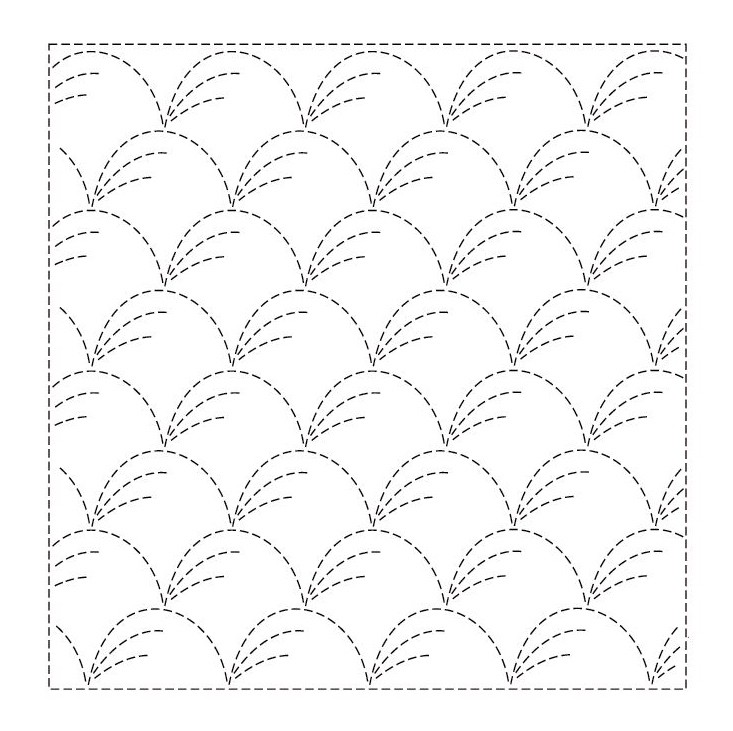
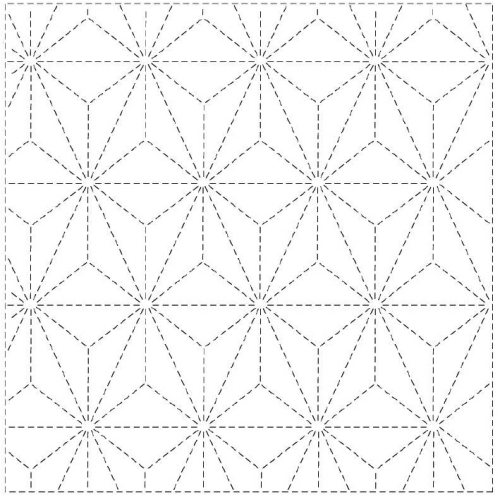

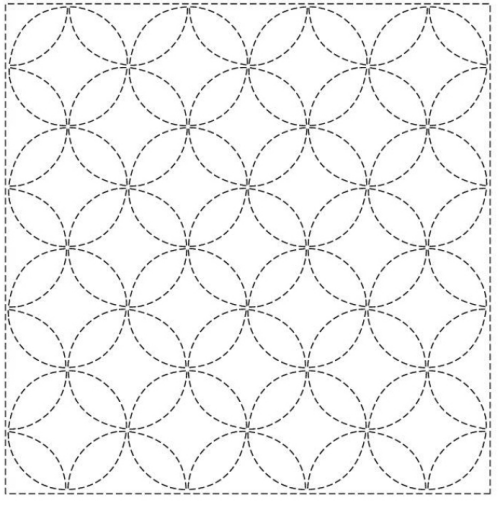
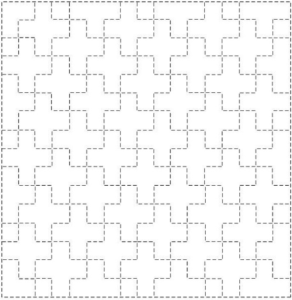
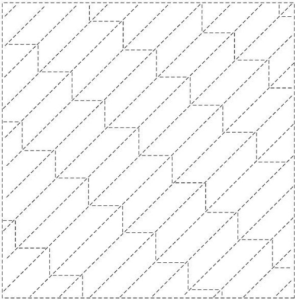

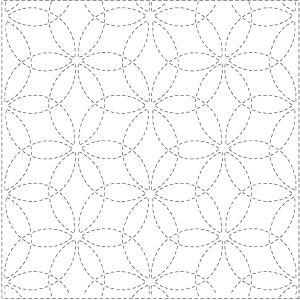
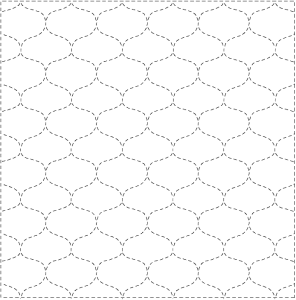
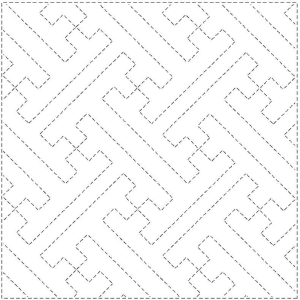
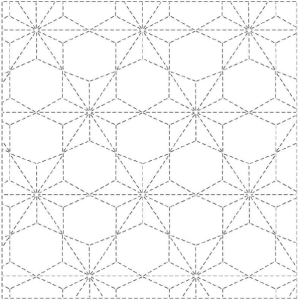
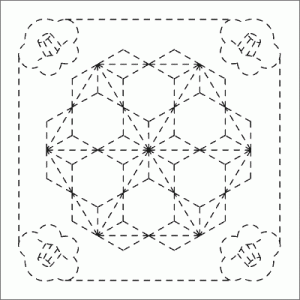
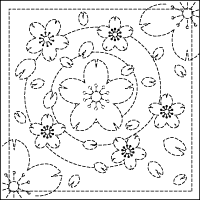
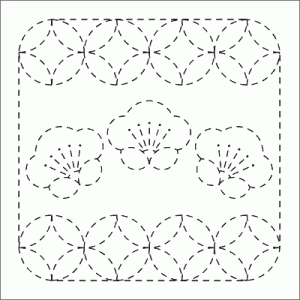
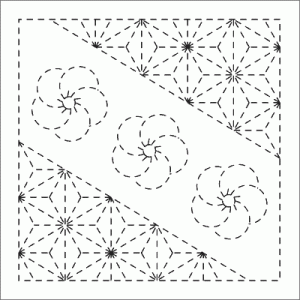
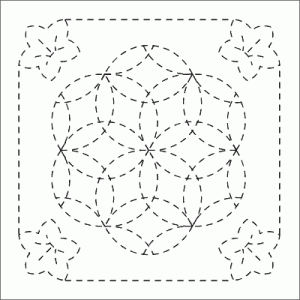
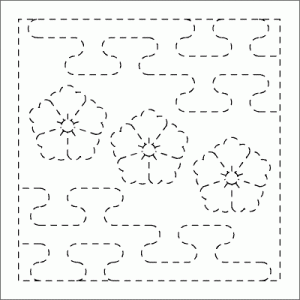

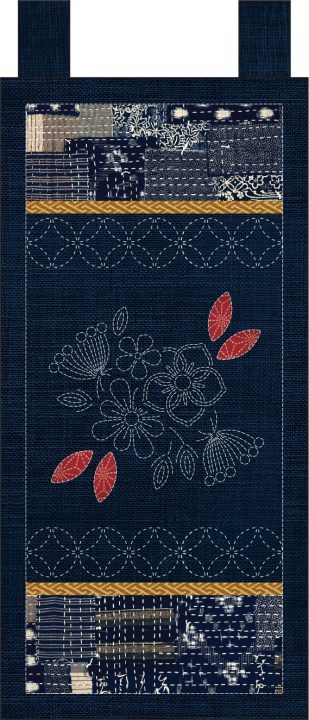
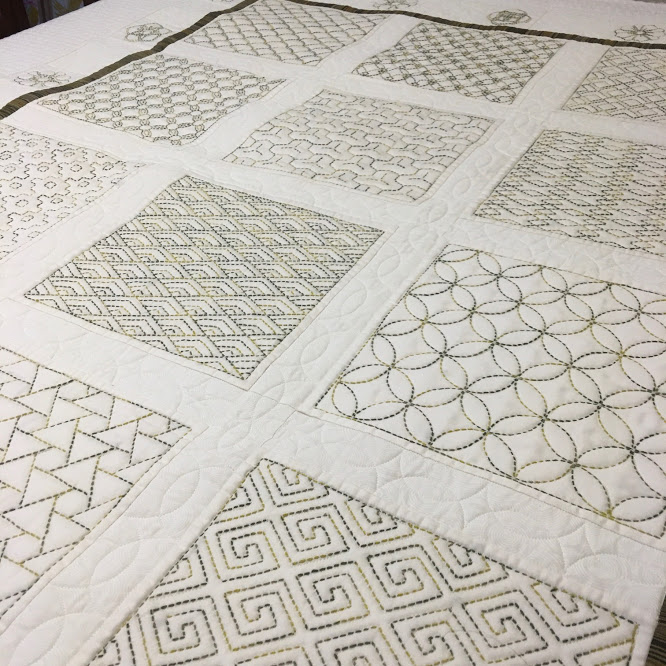
19 Comments
Fantastic blog post! Love the historical detail.
Thank you Sasha –
Thanks again for the information. I really enjoyed reading it.
Thank you
Thank you so much for that. I am about to make the Seven Treasures design on 2 placemats. It will give me so much pleasure to use them now knowing that it “symbolises endless peace and happiness, as well as a talisman for ‘infinite fertility and family prosperity’.”
Thank you for this historical information. I have loved sashiko since living in Japan over 30 years ago with my family. I have many items stitched in this way. Several of my zabuton and table cloths disappeared beneath the sea when out boat capsized in rough sea!
I find stitching this way brings such a sense of peacefulness and, as our human eye seems to find order so satisfying, the result of the finished piece as so very pleasing.
I love your table runner of motifs. I tried this idea to make a yukata, but was not so successful. Magenta, purple, cherry red was the palette of threads sewn on a beige background. Unfortunately my ability to make it into a gown did not work out well. I shall try again.
Thank you for your inspiration.
Mary
Thank you Mary – I encourage you to try again with your ideas – I too have to re-do projects that don’t work first time – Good luck – Sue
Thank you so much Sue for the informative origin, history and explanation of the designs. Thankfully, when I am now questioned about Shashiko, I will be able to explain the art and origins more proficiently. It is such and enjoyable peaceful calming stitch.
Sister in Sashiko stitching – Lee
Thank you for the history behind the sashiko designs. It will be nice to include the name and history of the patterns when making sashilo gifts.
So beautiful and informative.
Thank you
Thank you for the authentic description of the craft. I love the history.
I’m a beginner and hoping by practicing it will become a life long quiet creative craft of mine to enjoy
Jan
Thank you, Jan. It’s a wonderful craft, and you’ll get a lot out of it. I always recommend sashiko samplers for beginners, as they’re small, one-off projects with the patterns already pre-stencilled. They’re also a great introduction to the many traditional Japanese designs used in sashiko.
All the best,
Sue
Wonderfully comprehensively article on sashiko – I particularly enjoyed the history, origins and love the patterns.
Thank you.
Fantastic article! Well done. The patterns are great. Thanks.
Hello Bill, Thank you so much for your lovely comments. It’s a passion to share our knowledge of Sashiko and Boro to our customers. Puts a different perspective on the craft when you understand some of the origins. Enjoy. Stay safe in this challenging time. Cheers Sue Howie
Such an excellent monograph on sashiko patterns. I searched all over the internet until I got here. This is what I wanted to know! Thank you sharing your knowledge.
Thank you for the treasure of beautiful, artistic, geometric patterns.
[…] Image from here […]
[…] Pattern of your choice (here are some options) […]